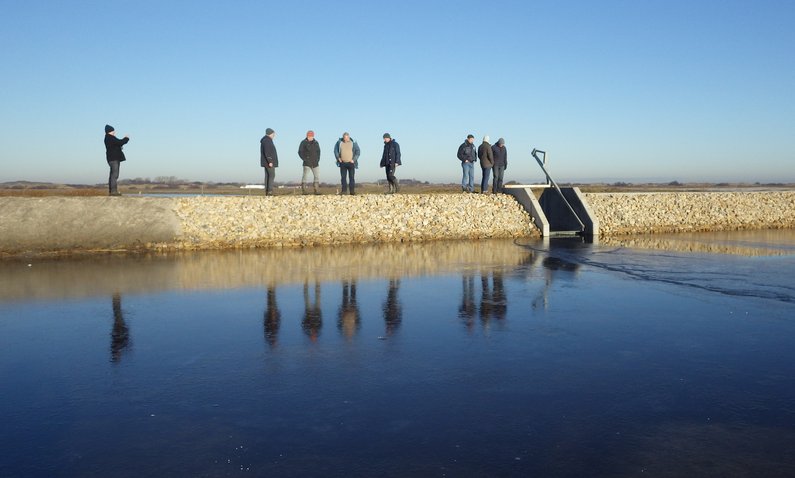The project
What we do
Overview of our measures
The LIFE IP GrassBirdHabitats aims to improve the conservation status of grassland breeding birds along the East Atlantic Flyway. The project comprises measures to increase reproduction rates in Germany and the Netherlands, and to improve the birds' return rates from their wintering grounds in West Africa. Within the project area, habitats for grassland breeding birds will be optimised.
This optimisation is done through a bundle of measures, including raising water levels, low-intensity farmland management, keeping the landscape open, as well as predation management in the Netherlands and Germany.
Raise water level
Meadow birds need temporarily flat-flooded grassland areas during the breeding season.
Extensive farming
Only extensive grassland management creates the food conditions that are necessary for the birds.
Open landscape
Meadow birds need to have a broad overview of their surroundings, because they breed on the ground.
Land purchase
Some of our measures can only be secured in the long run when they are implemented on public land.
At NLWKN, this project employs six site managers who coordinate measures in Lower Saxony. In the Netherlands, the project partners of Collectief Súdwestkust, Bond Friese VogelWachten and the Province of Fryslân also employ site managers.
The site managers cooperate with local and regional authorities and NGOs to improve the breeding areas of meadow birds. Also, they develop proposals for the funding of additional meadow bird conservation measures.
In West Africa, our activities will focus on improving the habitat quality of the most important wintering areas, mostly in Senegal and adjacent areas. To some degree, these sites and the threats they face are yet to be determined. Furthermore, it is planned to improve water and land management of important national parks.
Insight into our field work








Wet and open grasslands depend on grassland management. A business model will be developed to maintain both suitable bird habitats and sufficient income for farmers. Socio-economic investigations will show the project's impact on local economy and population, including ecosystem functions and carbon sequestration.
Also, the impact of measures and environmental factors on our focus species will be analysed. For this purpose, we will determine the survival rates of birds and provide recommendations for improved site management. Our project partners in the Netherlands actively protect grassland breeding bird nests and chicks. Their impact and the effects of habitat improvement are monitored, for example by bird counts and by insect monitoring to estimate food availability.
Details about our measures
GrassBirdHabitats is a so-called Integrated Project (IP), which means that extensive activities have to be employed to complete the project. Some of them require additional capacities and funding.
Find out more about our most important activities below.

